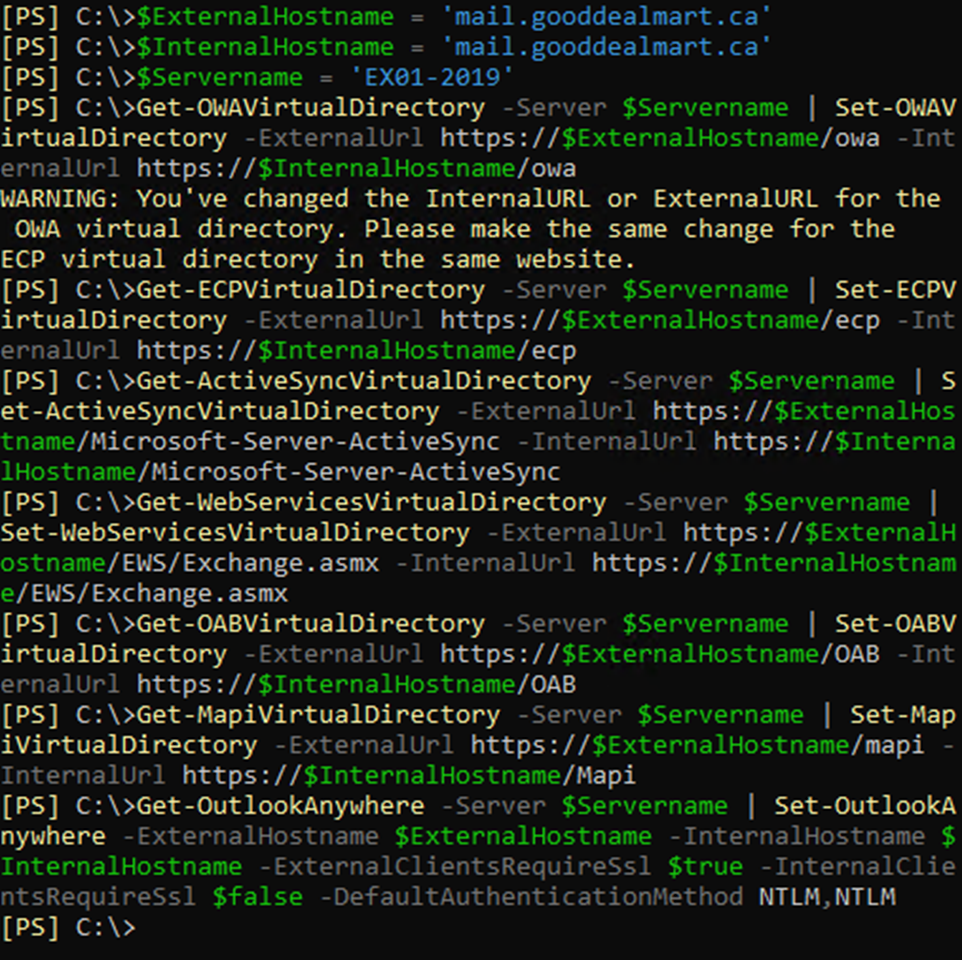Configuring the client access namespaces ensures clients can connect to Exchange Server 2019 using the correct URLs for each service. They help to ensure a smooth user experience and avoid issues such as certificate errors and connection failures.
1. Login to the Exchange 2019 server.
2. Open the Exchange Management Shell as administrator.
3. Run the below cmdlet to change the namespaces settings.
$ExternalHostname = “mail.gooddealmart.ca”
$InternalHostname = “mail.gooddealmart.ca”
$Servername = “EX01-2019”
Get-OWAVirtualDirectory -Server $Servername | Set-OWAVirtualDirectory -ExternalUrl https://$ExternalHostname/owa -InternalUrl https://$InternalHostname/owa
Get-ECPVirtualDirectory -Server $Servername | Set-ECPVirtualDirectory -ExternalUrl https://$ExternalHostname/ecp -InternalUrl https://$InternalHostname/ecp
Get-ActiveSyncVirtualDirectory -Server $Servername | Set-ActiveSyncVirtualDirectory -ExternalUrl https://$ExternalHostname/Microsoft-Server-ActiveSync -InternalUrl https://$InternalHostname/Microsoft-Server-ActiveSync
Get-WebServicesVirtualDirectory -Server $Servername | Set-WebServicesVirtualDirectory -ExternalUrl https://$ExternalHostname/EWS/Exchange.asmx -InternalUrl https://$InternalHostname/EWS/Exchange.asmx
Get-OABVirtualDirectory -Server $Servername | Set-OABVirtualDirectory -ExternalUrl https://$ExternalHostname/OAB -InternalUrl https://$InternalHostname/OAB
Get-MapiVirtualDirectory -Server $Servername | Set-MapiVirtualDirectory -ExternalUrl https://$ExternalHostname/mapi -InternalUrl https://$InternalHostname/Mapi
Get-OutlookAnywhere -Server $Servername | Set-OutlookAnywhere -ExternalHostname $ExternalHostname -InternalHostname $InternalHostname -ExternalClientsRequireSsl $true -InternalClientsRequireSsl $false -DefaultAuthenticationMethod NTLM,NTLM

I hope you enjoy this post.
Cary Sun
X: @SifuSun
Web Site: carysun.com
Blog Site: checkyourlogs.net
Blog Site: gooddealmart.com
